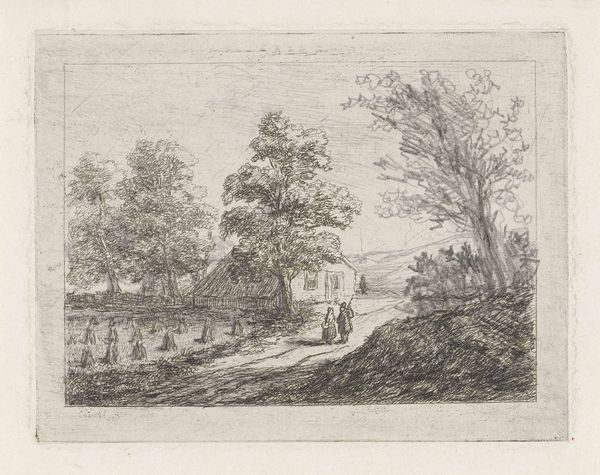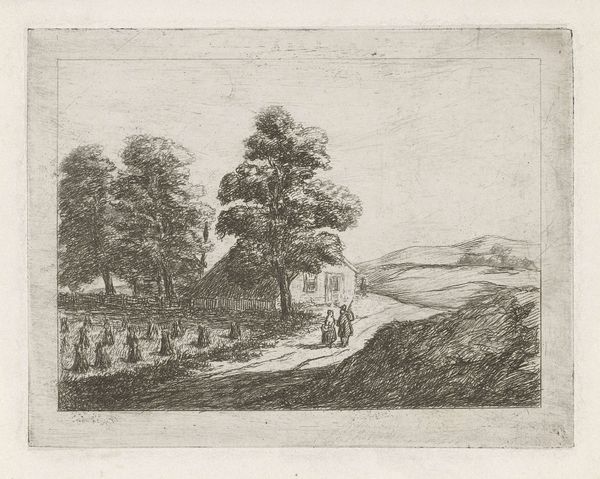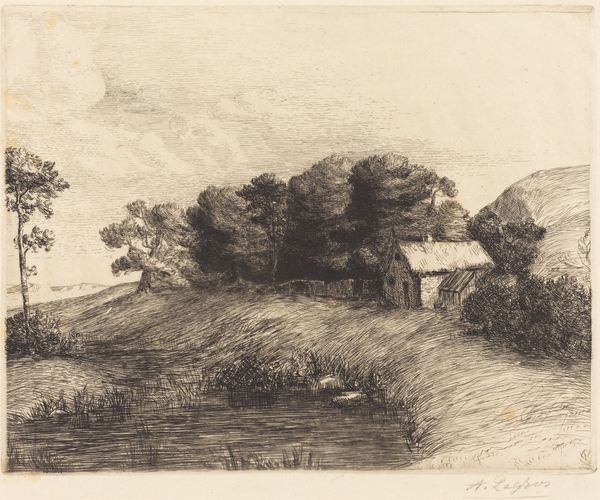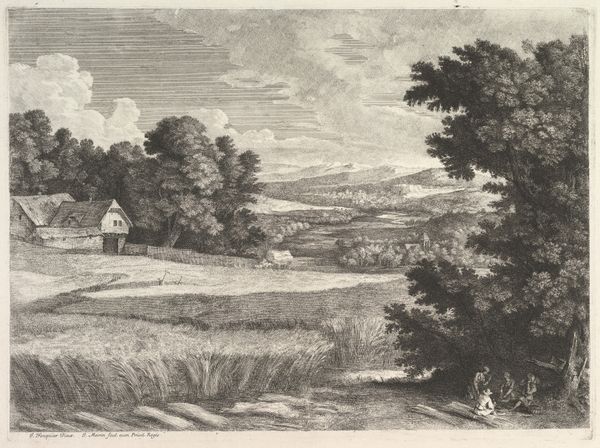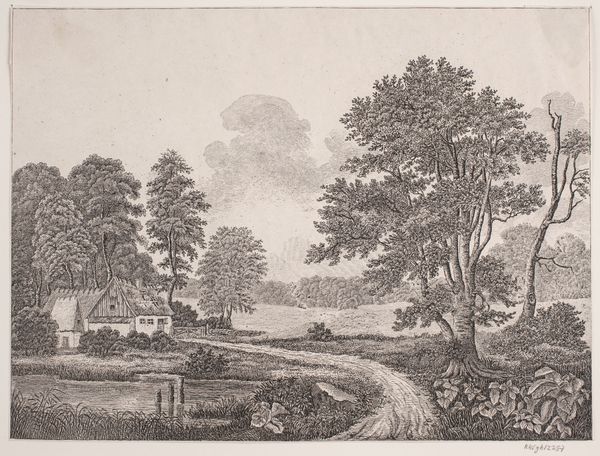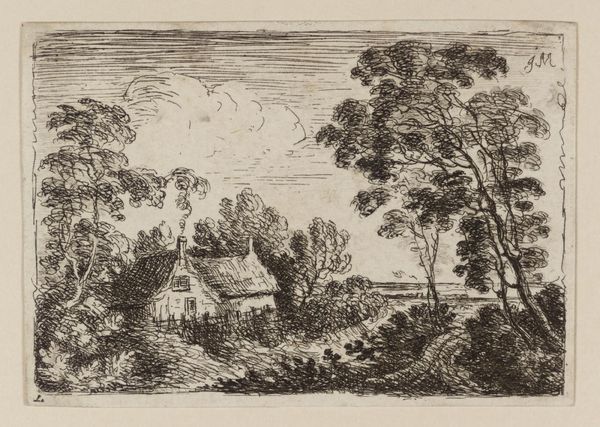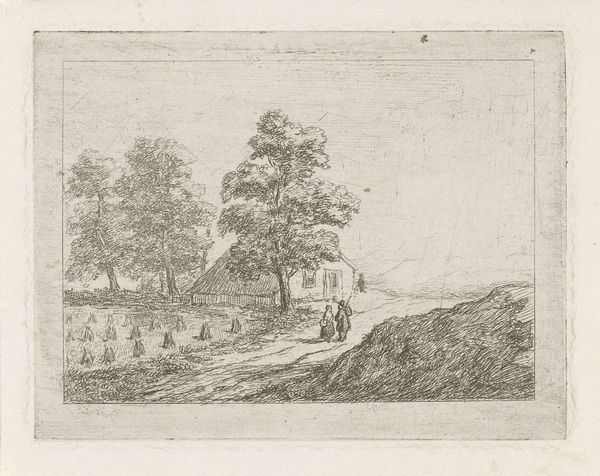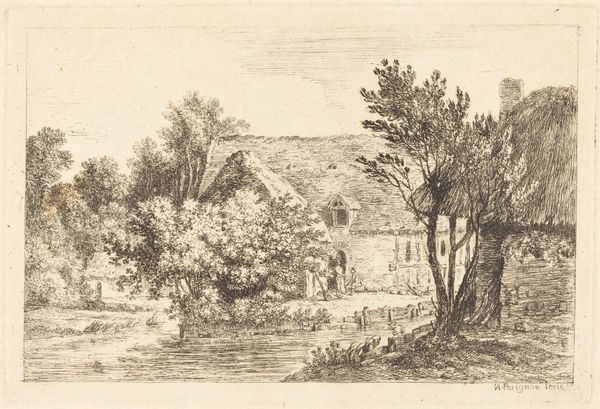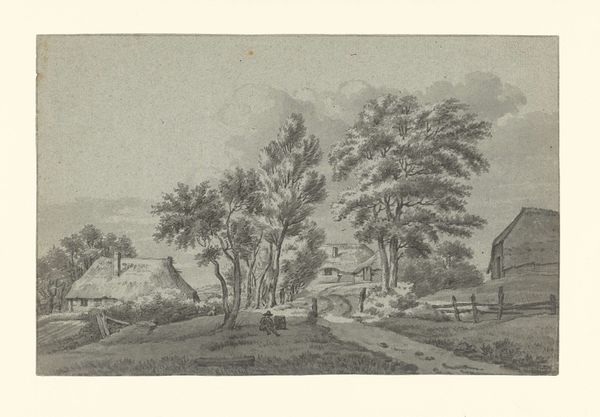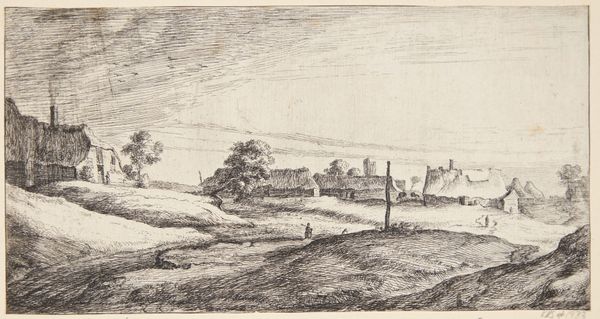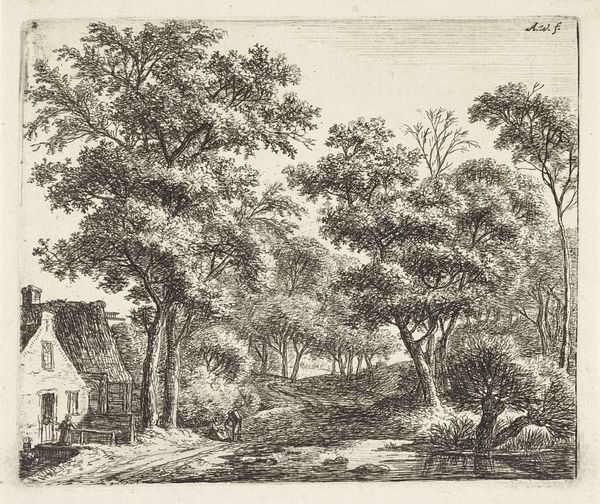
#
pencil drawn
#
amateur sketch
#
light pencil work
#
pencil sketch
#
old engraving style
#
personal sketchbook
#
pen-ink sketch
#
sketchbook drawing
#
pencil work
#
sketchbook art
Dimensions: height 65 mm, width 95 mm
Copyright: Rijks Museum: Open Domain
This is an etching, a print made by Jan Heppener, who lived in the 19th century. The appeal of the image really lies in its making, specifically the way that the artist has used the etching needle to describe the rural scene before us. The process of etching involves drawing into a metal plate that's been coated with wax. The plate is then immersed in acid, which bites into the metal wherever it's been exposed. Ink is then applied and the plate is pressed onto paper. Heppener was clearly very skilled at this laborious technique. Note the density of the lines in the trees, and the short, quick strokes that build up the sense of foliage. The resulting image has a freshness to it, as though Heppener was working directly from nature. By understanding the craft that went into its making, we can appreciate the artist’s artistry. This is not just a picture of a landscape; it is a tour de force of labor, skill, and close observation.
Comments
No comments
Be the first to comment and join the conversation on the ultimate creative platform.
